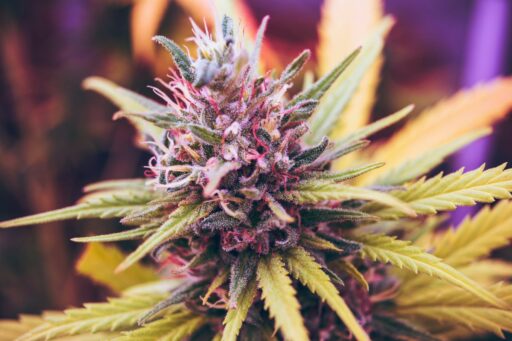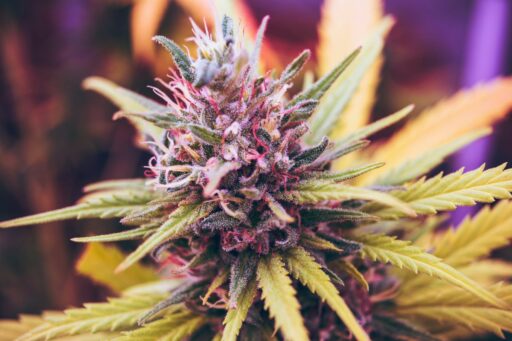The legality of marijuana in Mexico is a complex and evolving issue, influenced by federal regulations, international drug policies, and the shifting dynamics of drug production and trade. As Mexico grapples with the impact of synthetic drugs, organized crime, and challenges in drug policy and public health, understanding the current landscape is crucial for those navigating the legalities of marijuana in the country. This article delves into the multifaceted aspects of marijuana legality in Mexico, providing insights into the current state of affairs and the implications for future policy and enforcement.
Key Takeaways
- Mexico’s legal framework for marijuana is in flux, with federal regulations often in conflict with state variances and impacted by international drug policies.
- The decline in marijuana cultivation in favor of synthetic drug production has significant implications for law enforcement and the Mexican Secretariat of National Defense (Sedena).
- Organized crime, including Mexican cartels and Chinese money laundering operations, plays a dominant role in the marijuana trade and its profitability.
- A lack of federal data on drug use in Mexico, alongside increasing rates of drug use and overdoses, underscores the need for enhanced US-Mexico security cooperation.
- The complexities of marijuana legalization are exacerbated by diverse state laws, the facade of legality in the marijuana business, and the uncertain prospects for coexistence with drug gangs.
Current Legal Landscape of Marijuana in Mexico

Federal Regulations and State Variances
The legal landscape of marijuana in Mexico is a complex tapestry woven from both federal mandates and state-specific regulations. At the federal level, marijuana remains illegal, yet enforcement is inconsistent due to varying state laws and the federal government’s reluctance to intervene heavily in state matters. This patchwork of laws creates a challenging environment for law enforcement and regulatory bodies.
- Federal law prohibits the trafficking of marijuana across state lines.
- States have the autonomy to decriminalize or legalize marijuana, leading to a diverse range of local policies.
- The disparity in state laws has been exploited by organized crime, including the Chinese mafia, to traffic marijuana clandestinely.
The rapid expansion of the marijuana industry in certain states, despite federal restrictions, has led to a situation where the industry’s growth is outpacing the ability of regulators to manage it effectively. This has opened the door for illegal operations to flourish under the guise of legality.
Impact of International Drug Policies
The international drug policies have a profound impact on the legality and enforcement of marijuana laws in Mexico. The influence of foreign governments and international agreements cannot be understated, as they shape the strategies and priorities of Mexican drug policy. For instance, the United States has historically played a significant role in shaping Mexico’s drug enforcement tactics, often emphasizing the suppression of drug trafficking over harm reduction strategies.
- The U.S. Department of Justice’s deprioritization of enforcement in the face of legalization and decriminalization has led to a more relaxed federal response.
- Chinese government statements emphasize a commitment to international anti-drug cooperation, yet U.S. officials suspect policies that may indirectly foster the drug trade in the Americas.
- The profits from the marijuana trade are believed to enable the expansion of Chinese organized criminal networks, affecting the global underground banking system.
The complexities of international relations and their influence on domestic drug policies present a challenge for Mexico, as it navigates the pressures and expectations of global partners while addressing its own public health and security concerns.
The Role of the Mexican Secretariat of National Defense (Sedena)
The Mexican Secretariat of National Defense (Sedena) has been at the forefront of combating the shift from traditional marijuana cultivation to synthetic drug production. Seizures of methamphetamine, for instance, have surged by 121% since the current administration took office, reflecting a broader trend in the drug landscape. Sedena’s role has become increasingly complex as they face the challenge of intercepting synthetic drugs, which are often more difficult to detect and dismantle than marijuana fields.
The dynamic of drug enforcement is evolving, with Sedena adapting to the new realities of drug production and trafficking. The focus has shifted from vast fields of cannabis to the discreet and often mobile laboratories that produce synthetic drugs.
The collaboration with U.S. agencies has been a critical component of Sedena’s strategy, although recent policies have imposed stricter limits on U.S. agents and the extent of their cooperation with Mexican law enforcement. This has raised concerns about the effectiveness of bilateral efforts to curb drug trafficking and the potential need for a more aggressive stance against the cartels in the future.
The Shift from Traditional Crops to Synthetic Drugs

Decline in Marijuana Cultivation
In recent years, there has been a noticeable decline in marijuana cultivation across Mexico. This trend is partly attributed to the saturation of the market and the subsequent drop in prices, which has made the crop less profitable for farmers. As a result, many have turned to other forms of agriculture or left the industry altogether.
- Saturation of the cannabis market
- Decrease in profitability for farmers
- Shift to alternative crops or industries
The decline in cultivation has also been influenced by the increasing dominance of synthetic drugs, which offer higher profit margins and are easier to transport. This shift has significant implications for both the economy and the law enforcement strategies in the region.
Rise of Synthetic Drug Production
The landscape of drug production in Mexico is undergoing a significant transformation. Synthetic drugs, such as methamphetamine and fentanyl, are increasingly becoming the substances of choice for production and distribution, overshadowing the traditional marijuana crops. This shift is evidenced by the surge in treatment sought by youths for methamphetamine addiction and the heightened activity in capturing drug labs and synthetic drugs by government forces.
- Synthetic drug seizures by Sedena have increased by 121% since the start of the current administration.
- U.S. border agents report a corresponding rise in seizures at the southern border.
- The decline in marijuana cultivation has led to an uptick in clandestine labs for synthetic drug production.
At this pivotal moment, with criminal groups pivoting towards synthetic drugs and global drug use rates climbing, the absence of recent federal data on drug use in Mexico is a critical gap. The situation underscores the need for robust US-Mexico security cooperation to address the shared challenges posed by the evolving drug landscape.
Implications for Law Enforcement
The shift from traditional marijuana cultivation to synthetic drug production has presented significant challenges for law enforcement agencies. With the rise of synthetic drugs, authorities are now facing a more complex and dynamic drug landscape.
- Synthetic drugs often require different detection and testing methods compared to plant-based substances.
- The sophistication of organized crime groups involved in synthetic drug trade necessitates advanced investigative techniques.
- There is a need for specialized training for officers to effectively combat the evolving drug market.
Law enforcement must adapt to these changes with increased resources, improved technology, and enhanced international cooperation to effectively address the implications of this shift in drug production.
The Influence of Organized Crime on Marijuana Trade

Cartel Dominance in Drug Markets
The landscape of the drug trade in Mexico is marked by the overwhelming influence of cartels. These entities not only control the production and distribution of marijuana but also extend their reach to the governance of territories, often overshadowing official law enforcement. The cartels’ dominance is not limited to the traditional strongholds in the north but has expanded into southern states such as Guerrero, Michoacan, Chiapas, and Veracruz.
The financial backbone of these cartels is reinforced by their collaboration with Chinese organized crime groups, which have become the primary money launderers for the drug trade. This partnership has led to the creation of an extensive network of underground banking, which is considered the most extensive in the world. The revenue from marijuana sales plays a significant role in fueling this laundering apparatus.
The intertwining of drug trafficking and money laundering operations has created a complex challenge for both national and international law enforcement agencies. The sophistication and discipline of these criminal organizations make them formidable adversaries in the fight against illegal drug trade.
Chinese Organized Crime and Money Laundering
The infiltration of Chinese organized crime into the marijuana trade has not only altered the dynamics of the illicit market but has also introduced a sophisticated money laundering system. These groups, deeply rooted in southern China, have extended their reach globally, leveraging the Chinese diaspora to orchestrate their operations.
Their money laundering schemes are intricate, involving low rates and rapid transactions, which benefit both the Chinese mafias and the Mexican cartels. The system often implicates the Chinese elite, who facilitate the movement of drug money offshore, intertwining criminal activities with political influence and transnational repression.
The rise of Chinese organized crime in the cannabis market has transformed them into a formidable force in the global underworld. Their extensive network for laundering drug money is considered the most advanced and widespread underground banking system in the world.
The table below outlines the key components of the money laundering process utilized by Chinese organized crime:
| Step | Description |
|---|---|
| 1 | Collection of drug money in the US |
| 2 | Complicated transactions within China |
| 3 | Involvement of Chinese elite |
| 4 | Return of funds to Mexican cartels |
This expansion into the cannabis market has not only increased their financial strength but has also solidified their position as a major player in the international arena of organized crime.
Cross-Border Smuggling Dynamics
The dynamics of cross-border smuggling have evolved with the diversification of criminal activities. Chinese organized crime groups have become significant players, leveraging their extensive networks to smuggle marijuana and other drugs into lucrative markets across the East Coast of the United States. The smuggling routes are not limited to land; they encompass a variety of transportation methods including cars, trucks, and even planes, indicating the sophistication and reach of these operations.
The facade of legality often masks the underlying criminal enterprise, with smuggled goods reaching stratospheric profit margins far from their origin.
The table below outlines the key aspects of cross-border smuggling dynamics:
| Aspect | Description |
|---|---|
| Participants | Mexican cartels, Chinese organized crime, local gangs |
| Methods | Use of cars, trucks, planes |
| Destinations | Primarily the East Coast of the US |
| Profits | Extremely high, with a significant markup |
This illicit trade not only undermines legal frameworks but also poses a challenge to law enforcement agencies tasked with curbing the flow of illegal substances. The complexity of these smuggling operations necessitates a coordinated international response to effectively dismantle them.
Challenges in Drug Policy and Public Health

Lack of Federal Data on Drug Use
The absence of recent federal data on drug use in Mexico hampers the ability to effectively address the shifting drug landscape. The last comprehensive survey, the ENCODAT, was conducted in 2016, and since then, no further studies have been funded or published. This lack of data is occurring at a time when the nation is witnessing a transition from traditional drug crops to synthetic substances, with significant implications for public health and policy.
Despite the absence of official statistics, anecdotal evidence and smaller studies indicate a troubling trend. Reports of increased drug use and dealing, as well as a surge in fentanyl overdoses, paint a grim picture of the current situation. For instance, fentanyl overdoses treated in Mexico saw a dramatic increase from 72 cases in 2020 to 184 in 2021, a 636% rise. Rehabilitation centers are also reporting a shift in substance abuse patterns, with methamphetamine overtaking marijuana.
The federal response to these developments has been notably subdued. With changing attitudes towards drug enforcement, particularly in the United States, there is a growing disconnect between the perceived urgency of the issue and the allocation of resources to combat it.
Increasing Rates of Drug Use and Overdoses
The landscape of drug use in Mexico is undergoing a significant transformation, with synthetic drugs like methamphetamine and fentanyl becoming increasingly prevalent. The surge in synthetic drug use is not only a concern for public health but also for law enforcement agencies.
Mexico has long been identified as a key player in the production and distribution of synthetic drugs. Recent trends indicate a worrying shift in domestic drug consumption patterns:
- Methamphetamine has overtaken marijuana as the primary substance for which individuals seek treatment.
- Fentanyl overdoses have seen a dramatic increase, with a 636% rise in cases treated from 2020 to 2021.
The absence of comprehensive federal data on drug use in Mexico hampers the ability to effectively address the issue, leaving policymakers and health professionals in the dark about the full extent of the problem.
The implications of these trends are far-reaching, affecting not only those who use drugs but also the broader societal fabric. The increase in drug use and overdoses necessitates a robust response that includes both prevention and treatment strategies, as well as international cooperation, particularly with the United States, to tackle the shared challenges posed by the proliferation of synthetic drugs.
The Need for US-Mexico Security Cooperation
The escalating synthetic drug crisis in both the United States and Mexico underscores the urgent need for enhanced US-Mexico security cooperation. This partnership is crucial to address the shared challenges posed by the proliferation of synthetic drugs and their associated overdoses.
The intertwined nature of drug markets and the evolving landscape of drug consumption patterns necessitate a binational approach to effectively combat these issues.
While Mexico has historically viewed drug trafficking as primarily a U.S. concern, the rising domestic consumption of drugs such as methamphetamines signals a shift towards recognizing it as a mutual problem. To target key organized crime figures involved in the illicit drug trade, a concerted effort in law enforcement cooperation is imperative.
The Mexico Institute plays a pivotal role in fostering understanding and cooperation between the two nations, aiming to enhance the bilateral relationship through research and policy recommendations. The commitment to this cause is echoed by the White House, which acknowledges the value of a strong partnership with the Mexican government in tackling cross-border drug trafficking issues.
Navigating the Complexities of Marijuana Legalization

Diverse State Laws and Their Exploitation
The patchwork of marijuana legislation across different states has inadvertently fostered a thriving black market. Steep taxes and regulatory gaps have made legal products less competitive, while the prohibition of interstate sales has been met with limited enforcement. This has opened the door for organized crime to exploit these discrepancies, with out-of-state investors often using illegal ‘straw owners’ to operate and traffic marijuana across state lines.
- Colorado’s legalization in 2012 set a precedent for state-specific laws.
- Federal law clashes with state regulations, barring interstate shipments.
- Organized crime groups are increasingly involved in cultivation and trafficking.
In states like Oklahoma, the rush of organized crime into the marijuana business has been likened to a ‘feeding frenzy,’ highlighting the urgency for a more cohesive legal framework to curb such exploitation.
The Facade of Legality in the Marijuana Business
The complex interplay between legal and illegal marijuana markets has created a facade of legality that belies the ongoing illicit activities. In states where marijuana has been legalized, a patchwork of regulations has inadvertently facilitated a black market that competes with legitimate businesses. This black market avoids taxes and undercuts legal prices, which harms the revenue potential of the legal industry and perpetuates the role of organized crime.
Despite the barriers to legal commerce, such as the prohibition on interstate marijuana shipments, limited enforcement has allowed for the exploitation of legal loopholes. Out-of-state investors have found ways to manipulate the system, using illegal "straw owners" to establish businesses and traffic marijuana across state lines. The rapid expansion of this quasi-legal industry has significant implications for both market dynamics and law enforcement strategies.
The legal marijuana industry’s struggle is not just against traditional drug cartels but also against a shadow economy that thrives on the margins of legality. The challenge lies in strengthening regulatory frameworks to close gaps that are currently being exploited.
Prospects for Peaceful Coexistence with Drug Gangs
The notion of peaceful coexistence with drug gangs in Mexico remains a contentious and complex issue. The landscape of criminal violence in Mexico is dominated by cartels, which have entrenched themselves in various regions, often filling economic voids left by the government. These groups have evolved from mere drug traffickers to multifaceted criminal organizations, engaging in activities such as extortion and taking over legitimate businesses.
It is unclear if peaceful coexistence was ever possible with Mexican drug gangs. The illegal trade always brought violence, despite some regions producing marijuana for decades.
The Mexican government’s approach has shifted from direct confrontation to a more nuanced strategy, which some interpret as an attempt to manage the conflict rather than eradicate the cartels. This has sparked debate over the government’s role and the potential for a future administration to take a harder stance.
- The cartels’ control extends from traditional northern bases to southern states like Guerrero and Michoacan.
- Government jobs and economic development are often scarce, leading some to view the cartels as providers of social mobility.
- High-profile gang member detentions have occurred, but the broader strategy seems to be one of conflict management rather than elimination.
Conclusion
The evolving landscape of drug policy and enforcement in Mexico, particularly concerning marijuana, reflects a complex interplay of legal, social, and criminal dynamics. While the country grapples with the challenges posed by synthetic drugs and the shifting strategies of criminal organizations, the legal status of marijuana remains a contentious issue. The absence of recent federal data on drug use in Mexico underscores the need for updated information to inform policy decisions. Moreover, the international implications of drug trafficking, including the involvement of Chinese organized crime in money laundering and the marijuana business, highlight the necessity for enhanced US-Mexico security cooperation. As Mexico continues to confront the realities of drug cultivation, trafficking, and consumption, it is clear that a multifaceted approach is required to address the concerns of citizen security and public health, and to navigate the intricate legal terrain surrounding marijuana.
Frequently Asked Questions
What are the current federal regulations for marijuana in Mexico?
Federal regulations in Mexico are complex and have been evolving, with the Supreme Court ruling in favor of decriminalizing marijuana for personal use. However, comprehensive legislation to regulate its production and sale is still pending, leading to a legal gray area.
How have international drug policies impacted marijuana legality in Mexico?
International drug policies, particularly those influenced by the United States, have historically shaped Mexico’s approach to drug enforcement. However, recent shifts towards decriminalization and legalization in various countries are influencing Mexico to reconsider its stance on marijuana.
What role does the Mexican Secretariat of National Defense play in drug enforcement?
The Mexican Secretariat of National Defense (Sedena) plays a crucial role in drug enforcement, with increased seizures of methamphetamine and efforts to dismantle clandestine drug labs, reflecting a shift from marijuana cultivation to synthetic drug production.
How is the rise of synthetic drugs affecting law enforcement in Mexico?
The rise of synthetic drugs, such as methamphetamine and fentanyl, has led to increased challenges for law enforcement in Mexico, with more clandestine labs to locate and dismantle, and a surge in overdoses requiring new strategies and resources.
What is the influence of organized crime on the marijuana trade in Mexico?
Organized crime, particularly drug cartels, have a significant influence on the marijuana trade in Mexico. They control large territories and have adapted to legal changes, often exploiting variances in state laws and engaging in cross-border smuggling.
What are the prospects for peaceful coexistence with drug gangs in regions that have traditionally produced marijuana?
The prospects for peaceful coexistence with drug gangs in marijuana-producing regions are uncertain. While some areas have a long history of cultivation, the illegal trade has consistently been associated with violence and instability.





